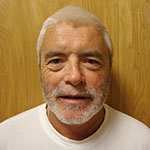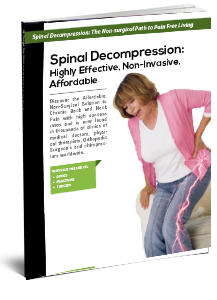Degenerative Disc Disease

Degenerative disc disease is not really a disease but a term used to describe the changes in your spinal discs as you age. Spinal discs are soft, compressible discs that separate the interlocking bones (vertebrae) that make up the spine. The discs act as shock absorbers for the spine, allowing it to flex, bend, and twist. Degenerative disc disease can take place throughout the spine, but it most often occurs in the discs in the lower back (lumbar region) and the neck (cervical region).
These conditions may put pressure on the spinal cord and nerves, leading to pain and possibly affecting nerve function.
What causes Degenerative Disc Disease?
As we age, our spinal discs break down, or degenerate, which may result in degenerative disc disease in some people. These age-related changes include:
- The loss of fluid in your discs. This reduces the ability of the discs to act as shock absorbers and makes them less flexible. Loss of fluid also makes the disc thinner and narrows the distance between the vertebrae.
- Tiny tears or cracks in the outer layer of the disc. The jellylike material inside the disc (nucleus) may be forced out through the tears or cracks in the capsule, which causes the disc to bulge, break open (rupture), or break into fragments.
- These changes are more likely to occur in people who smoke cigarettes and those who do heavy physical work (such as repeated heavy lifting). People who are obese are also more likely to have symptoms of degenerative disc disease. A sudden (acute) injury leading to a herniated disc (such as a fall) may also begin the degeneration process.
As the space between the vertebrae gets smaller, there is less padding between them, and the spine becomes less stable. The body reacts to this by constructing bony growths called bone spurs (osteophytes). Bone spurs can put pressure on the spinal nerve roots or spinal cord, resulting in pain and affecting nerve function.
What are the Symptoms?
Degenerative disc disease may result in back or neck pain, but this varies from person to person. Many people have no pain, while others with the same amount of disc damage have severe pain that limits their activities.
With symptomatic degenerative disc disease, chronic low back pain sometimes radiates to the hips, or there is pain in the buttocks or thighs while walking; sporadic tingling or weakness through the knees may also be evident. Similar pain may be felt or may increase while sitting, bending, lifting, and twisting. Chronic neck pain can also be caused in the upper spine, with pain radiating to the shoulders, arms and hands. Where the pain occurs depends on the location of the affected disc. An affected disc in the neck area may result in neck or arm pain, while an affected disc in the lower back may result in pain in the back, buttocks, or leg. The pain often gets worse with movements such as bending over, reaching up, or twisting.
How does Spinal Decompression help Degenerating Discs?
While lying comfortably on the spinal decompression table, gentle specialized traction forces are applied until decompression is achieved. Decompression produces a negative pressure inside the discs that acts like a vacuum. This negative pressure produces an influx of fluid and minerals which helps the discs to heal. Then with the addition of specific nutrients and minerals through supplements, the influx helps the discs to heal, become more flexible, more hydrated and even taller.
As disc bulges or herniations are drawn in, or as the discs begin to regenerate, pressure is taken off of the nerves and surrounding structures relieving the patient of pain and decreasing inflammation.
What are the Treatments Like?
At the beginning of each session, you will be comfortably fitted with a harness designed to achieve optimal decompression of the low back or neck. During a session of spinal decompression, you will notice a slow lengthening of your spine as your discs are gradually decompressed and relieved of pressure. The treatment process is safe and relaxing. While some patients with extensively injured discs have reported mild discomfort during the first few treatment sessions, their discomfort generally subsides upon subsequent visits. A patient safety switch provides an extra safety feature, allowing you to stop at any point should you feel discomfort. Each treatment session lasts approximately 30 minutes. Individual patient results may vary.
What is the Typical Treatment Protocol?
A typical spinal decompression treatment protocol consists of about 12-20 sessions over four to six weeks. Some conditions require fewer visits; some require more. Many patients report relief from their pain and other symptoms during the first few treatment sessions, and most experience dramatic pain relief after completion of their prescribed treatment program.
Why Is Spinal Decompression Different from Traction, Physical Therapy and Chiropractic Manipulation?
While traction, physical therapy, and manipulation may reduce disc pressures to as low as 40 mm Hg, only spinal decompression has been shown to achieve negative pressures within the spine. It has been clinically proven that spinal decompression creates negative pressures as low as -110 mm Hg3 within the injured disc during the treatment session. Normally, pulls exerted on the spine trigger sensory receptors in the back to tighten the muscles surrounding the vertebrae and discs in an effort to protect them from injury. Spinal Decompression bypasses this response by slowly pulling on the spine and relaxing the back over an extended period of time, allowing the spine to be repositioned without tension and without causing spasm and muscle guarding. It is important for patients to make sure that they are treated on a high quality true spinal decompression table by a physician with years of experience and not an imitation spinal decompression table.
Is it true that research has shown up to 88.9% success rate for spinal decompression?
Yes! More than 10 research articles have shown success rates for spinal decompression to be up to 88.9%. In fact John Leslie M.D. and the Mayo Clinic reported at the 18th Annual Meeting American Academy of Pain Management in Tampa Florida on September 5, 2007 the following amazing statistics:
- Multi-center, phase II, non-randomized pilot study utilizing spinal decompression.
- Designed to evaluate the effectiveness and safety of spinal decompression in the treatment of chronic lower back pain.
- Patients enrolled an average of ten years of chronic back pain.
- After two weeks of treatments of spinal decompression — 50% reduction in pain scores.
- Upon completion of the entire six week protocol success rate of 88.9% was documented.
Is it true that professional athletes, celebrities and patients in their 90s have turned to Spinal Decompression and Cold Laser Therapy as a successful, non-surgical option to neck and back pain without the use of drugs, pills and surgery?
Yes! Professional athletes, celebrities and even patients in their 90s are turning to spinal decompression and cold laser therapy as an affordable, non-surgical alternative to neck and back pain without the use of drugs, pills and surgery. People are tired of taking pills that simply mask the pain and can cause all kinds of serious side effects. People are frustrated with getting shots that work the first time or two and then eventually have minimal or no effect. And people are scared to death of surgery as they have seen firsthand their friends and relatives who spent 1,000s of dollars, had weeks of “down time”, have scars, and risked serious side effects and still ended up with a “failed back surgery syndrome”. New non-surgical spinal decompression is not only effective and affordable but is also non-invasive and safe.
If you have more questions please go to the Common Questions section or call us anytime.
Patient Testimonials

“When I started this program, I had burning, stabbing pain down my right leg and numbness and tingling in my foot. Doctors told me I had Sciatica complicated by Degenerative Disc Disease. I tried chiropractic and physical therapy with only minimal relief. Sometimes the physical therapy actually made it worse. After beginning the spinal decompression treatments ... the pain is now gone. My back was always sore and stiff. Now it feels much, much better. Overall, this program worked wonders for me and I hope it will for everybody.”
~ Tim S.

“My back used to hurt all day, everyday. Doctors told me I have Degenerative Disc Disease. That’s when I saw an ad for spinal decompression and deep tissue laser therapy .... After my second treatment, I could get out of bed in the morning with no pain. Three weeks later I am pain-free! Thank each and every one ... for making my life better.”
~ Bess K.


Free Reports
Discover How Spinal Decompression is Changing the Way Neck and Back Pain Have Been Treated without Drugs, Pills, Shots, or Surgery.
How Do I Know If I am Eligible For Care?
Call Us Today to Schedule YOUR Consultation!
(925) 858-6844
We treat low back pain, neck pain, sciatica, herniated discs, degenerative or bulging discs, or spinal stenosis with non surgical spinal decompression. Learn more about this safe, comfortable, and affordable low back and neck pain treatment offered by Total Wellness Center in Pleasanton, California; read testimonials and spinal decompression reviews from many satisfied patients.
Call us to schedule a complimentary consultation to determine if you are a candidate for Spinal Decompression and our multi-step Protocol. The doctor will ask you a series of questions such as “Where is the pain, when did it begin, what makes it better or worse?” Then a thorough examination will be performed in which case the doctor will check your reflexes, blood pressure, balance, gait, skin sensory changes muscle strength and more to determine the cause of your back or neck pain. At this point the doctor may recommend x-rays or an MRI if he feels like further imaging will be necessary to determine the exact cause. After combining all of this information together the doctor will determine if you will make a good candidate for spinal decompression therapy and our multi-step Protocol. If you do qualify for care, your Doctor will explain their recommended plan of action for you. If for some reason you do not qualify for care the doctor will refer you to someone who may better suit your needs.
The information on this site has not been evaluated by the FDA.

